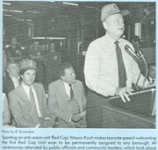- Joined
- Jun 27, 2007
- Messages
- 3,733
Would not allow my dog in those areas, let alone a human!

******* said:Every Christmas time in 82 engine we would have one of the guys dress like santa, buy couple hundred Christmas canes and ride around the district giving the candy to the local kids. My last time, 1975, we came back to qtrs. with 70% of the canes which we had no kids to give them out to, all burned out blocks. A very few of the companies when relocated would remove the decorations from the relocated house tree, when they knew they had time. Take the tree outside, set it on fire, then bring it back into qtrs. and redecorate it.
